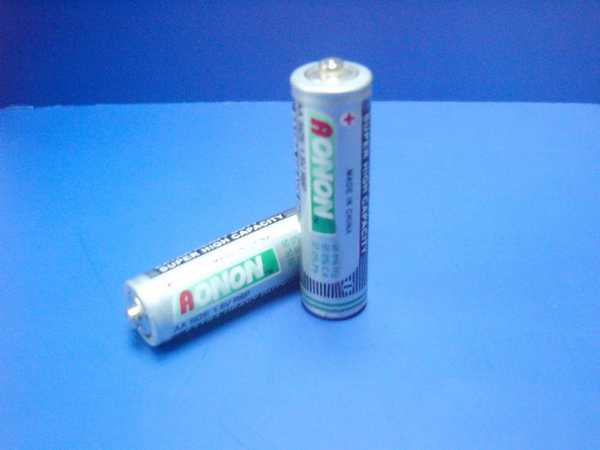What is lithium battery?
Europe's largest economy, Germany, recently activated an emergency plan to manage gas supplies that the natural gas could be rationed if supplies are disrupted or disrupted by a stand-off over Russian demands to pay for fuel in rubles.
German Vice-Chancellor, minister of economy and climate protection, said Germany's gas supplies were secure for now, but he urged consumers and businesses to reduce consumption, saying "every kilowatt of electricity counts."
Germany's gas network regulator can ration gas if supplies run short. Plants would be the first to be affected. Special treatment will be provided to private families, hospitals, and other important institutions.
Half of Germany's 41.5 million households use natural gas for heating, and industry consumption accounts for a third of the country's 100 billion cubic meters of gas demand in 2021.
The price of many energy and commodities like the lithium battery could be affected.
Lithium battery is a kind of battery that uses lithium metal or lithium alloy as positive/negative electrode material and uses non-aqueous electrolyte solution. In 1912, the lithium metal battery was first proposed and studied by Gilbert N. Lewis. In the 1970s, M. S. Whittingham proposed and began to study lithium-ion batteries. Due to the very active chemical properties of lithium metal, the processing, storage and use of lithium metal have very high environmental requirements. With the development of science and technology, lithium batteries have become the mainstream.
What are the types of lithium batteries?
Lithium batteries can be roughly divided into two categories: lithium metal batteries and lithium ion batteries. Lithium-ion batteries do not contain lithium in the metallic state and are rechargeable. The fifth generation of rechargeable batteries, lithium metal batteries, was born in 1996, and its safety, specific capacity, self-discharge rate and performance-price ratio are better than lithium-ion batteries. Due to its own high technical requirements, only companies in a few countries are producing such lithium metal batteries.

What is the working principle of lithium battery?
Lithium Metal Batteries:
Lithium metal batteries generally use manganese dioxide as the positive electrode material, metal lithium or its alloy metal as the negative electrode material, and use a non-aqueous electrolyte solution.
Discharge reaction: Li+MnO2=LiMnO2
Lithium Ion Battery:
Lithium-ion batteries generally use lithium alloy metal oxides as positive electrode materials, graphite as negative electrode materials, and use non-aqueous electrolytes.
The reaction at the charging positive electrode is
LiCoO2=Li(1-x)CoO2+xLi++xe-(electron)
The reaction that takes place on the charging negative electrode is
6C+xLi++xe- = LixC6
Rechargeable battery total reaction: LiCoO2+6C = Li(1-x)CoO2+LixC6
What are the cathode materials of lithium batteries?
Positive electrode material: There are many optional positive electrode materials. At present, the common positive electrode active materials in the market are: Lithium cobalt oxide, lithium manganate, lithium nickelate, lithium iron phosphate, nickel-cobalt-aluminum ternary, nickel-cobalt-manganese ternary
Positive electrode reaction: Lithium ion intercalation during discharge, and lithium ion deintercalation during charging. When charging: LiFePO4 → Li1-xFePO4 + xLi+ + xe- When discharging: Li1-xFePO4 + xLi+ + xe- → LiFePO4.
What are the negative electrode materials of lithium batteries?
Negative material: graphite is mostly used. In addition, lithium metal, lithium alloy, silicon carbon anode, oxide anode material, etc. can also be used for the anode.
Negative reaction: lithium ions are deintercalated during discharge, and lithium ions are intercalated during charging.
When charging: xLi+ + xe- + 6C → LixC6
On discharge: LixC6→ xLi+ + xe- + 6C
High-quality lithium battery anode material manufacturer
Luoyang Moon & Star New Energy Technology Co., LTD, founded on October 17, 2008, is a high-tech enterprise committed to developing, producing, processing, selling, and technical services of lithium-ion battery anode materials. After more than ten years of development, the company has gradually developed into a diversified product structure with natural graphite, artificial graphite, composite graphite, intermediate phase and other harmful materials (silicon-carbon materials, etc.). The products are widely used in high-end lithium-ion digital power and energy storage batteries.
If you are looking for graphite or lithium battery anode material, click on the needed products and send us an inquiry:sales@graphite-corp.com.
A preparation developed in China; the comfort and the multifunctional properties of nanomaterials make "dead skin" capable of sensing again. Electronic skin is artificial skin that mimics the function of human skin. Recently, the world-renowned journal Advanced Science reported a simple and highly programmable electronic skin on a leather substrate developed by a Chinese team, which combines the natural complex structure of leather, the comfort of wearing, and the multi-functional properties of nanomaterials. , so that the "dead skin" has the ability to sense again.
In the future, lithium battery will be used in various high-tech fields, and the market demand for lithium battery will also be great. Please contact us for more information on lithium battery.
Inquiry us
NEXT NEWS